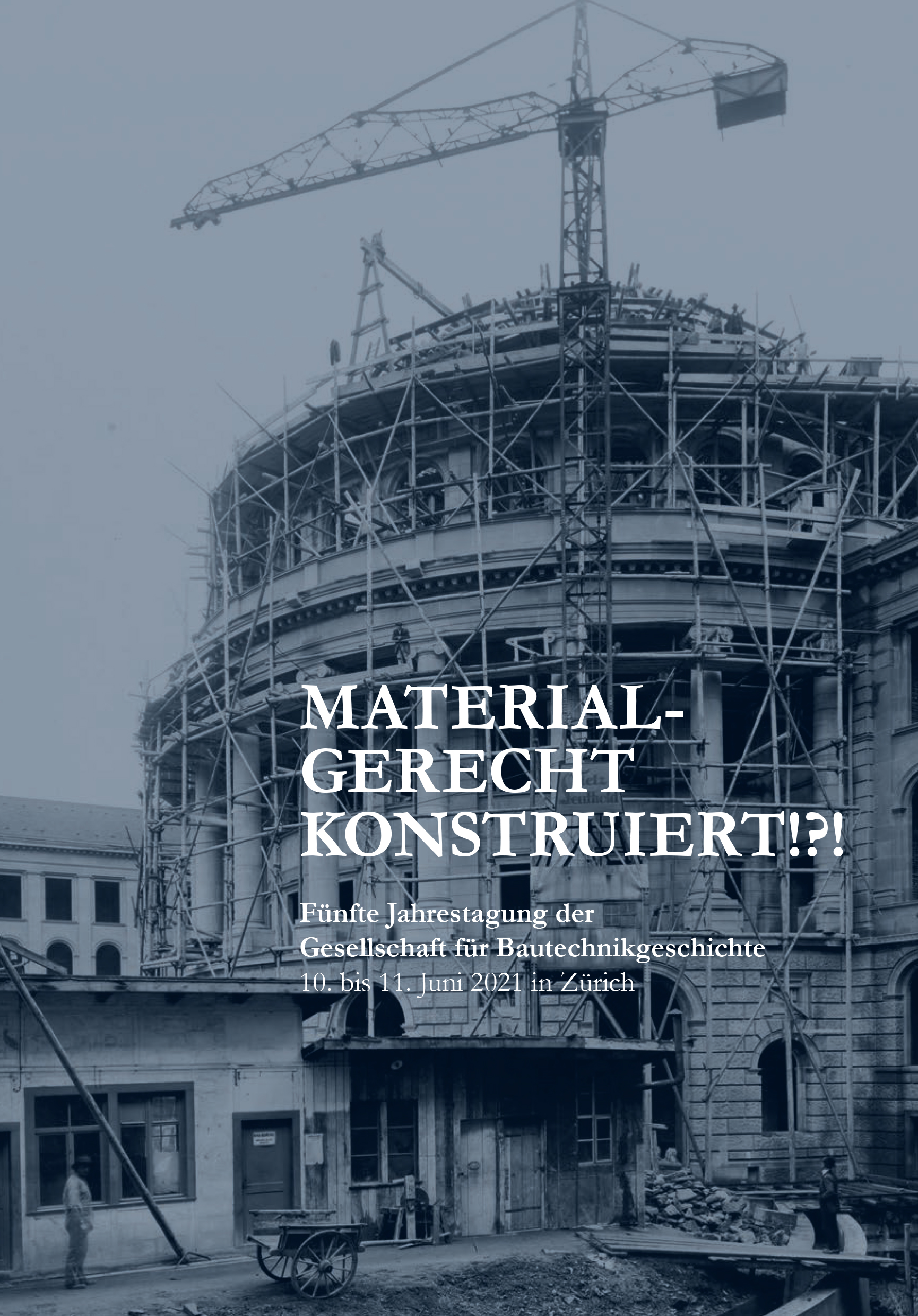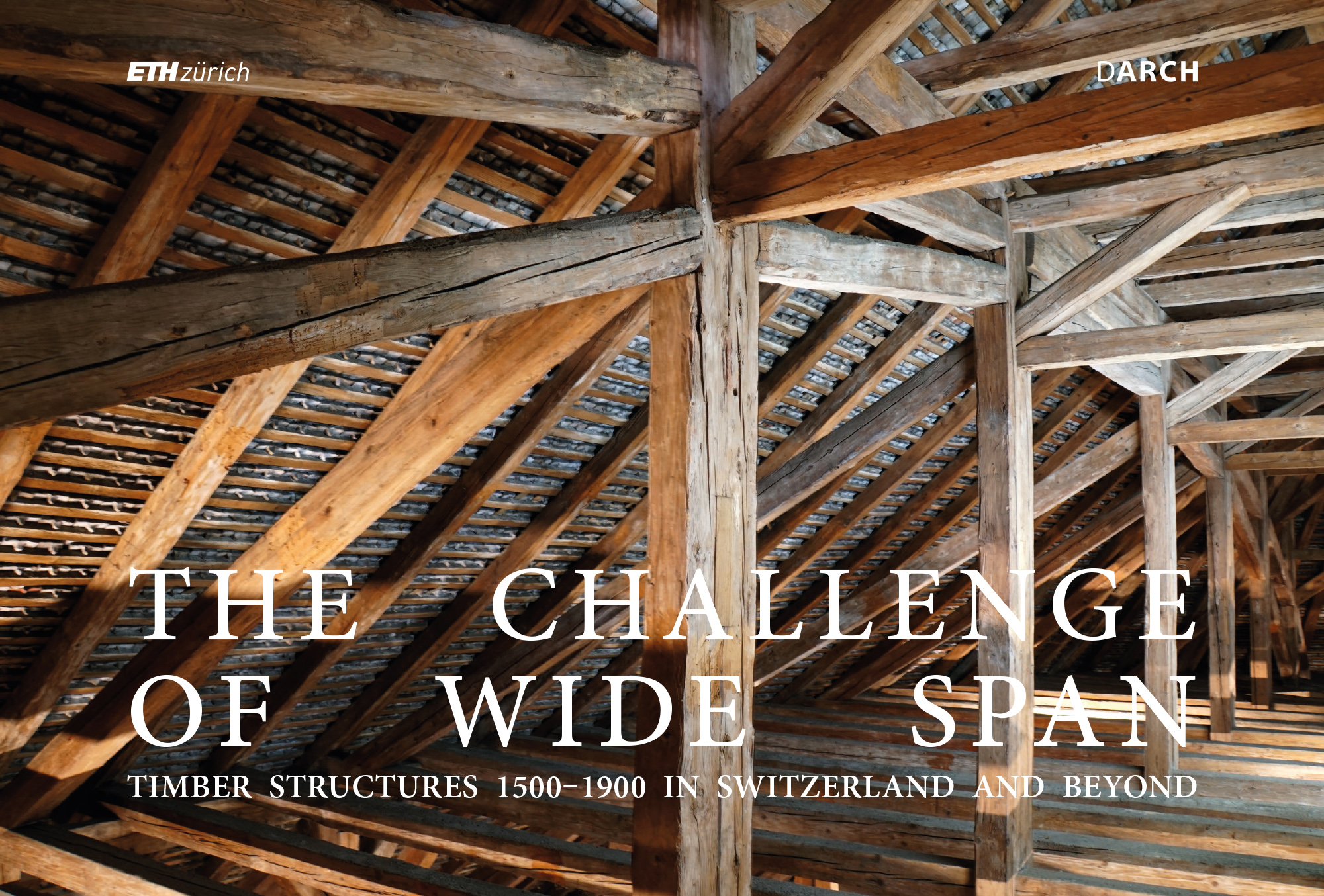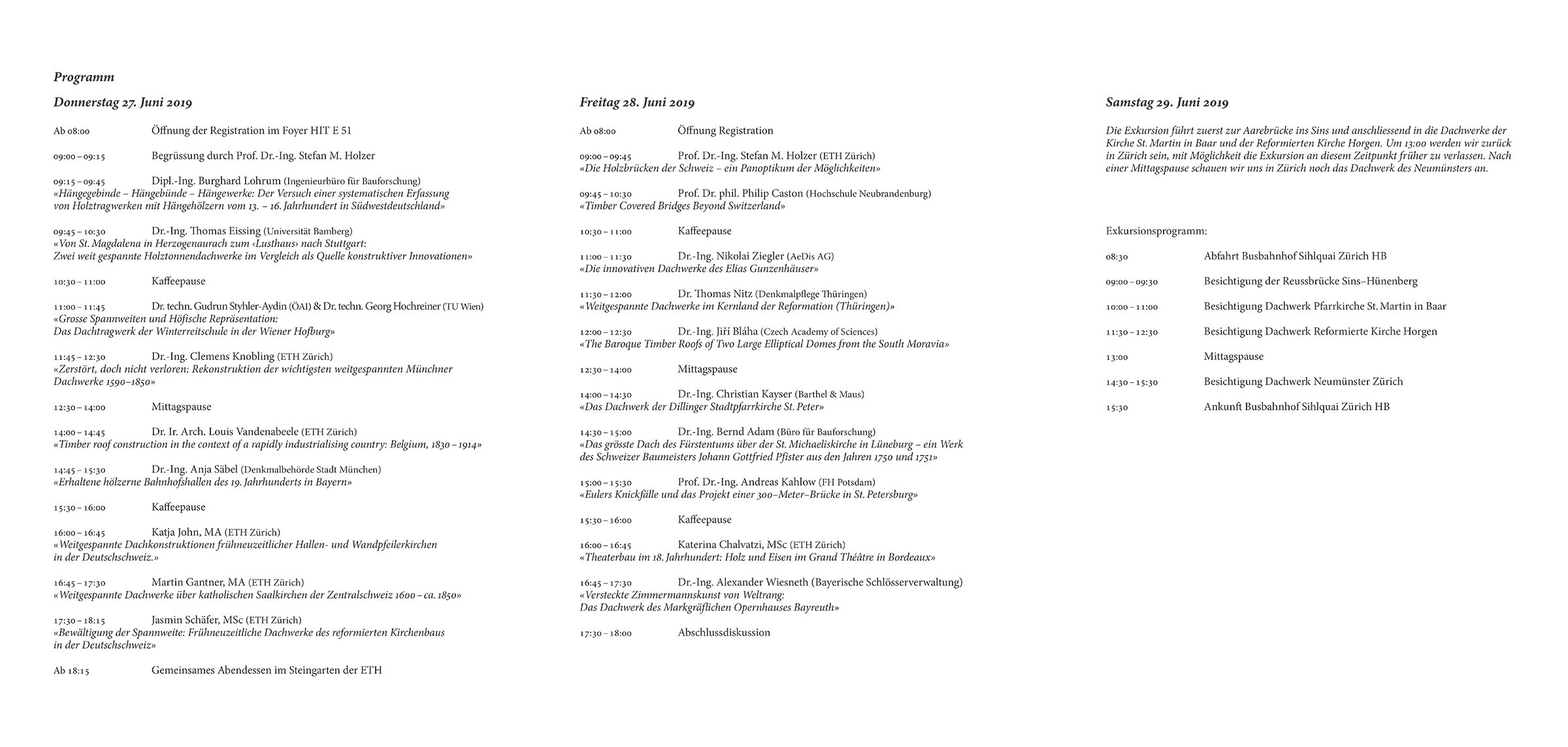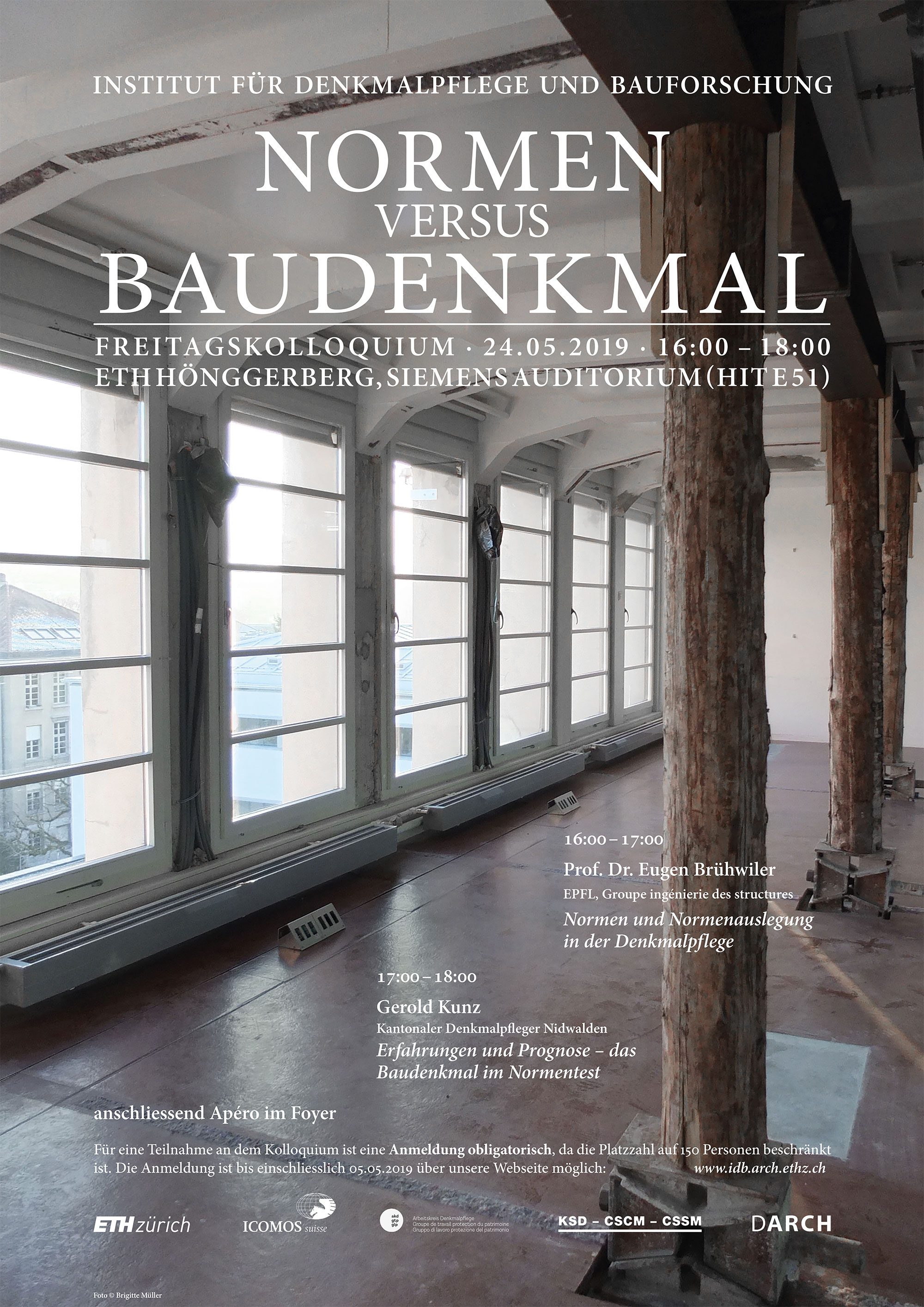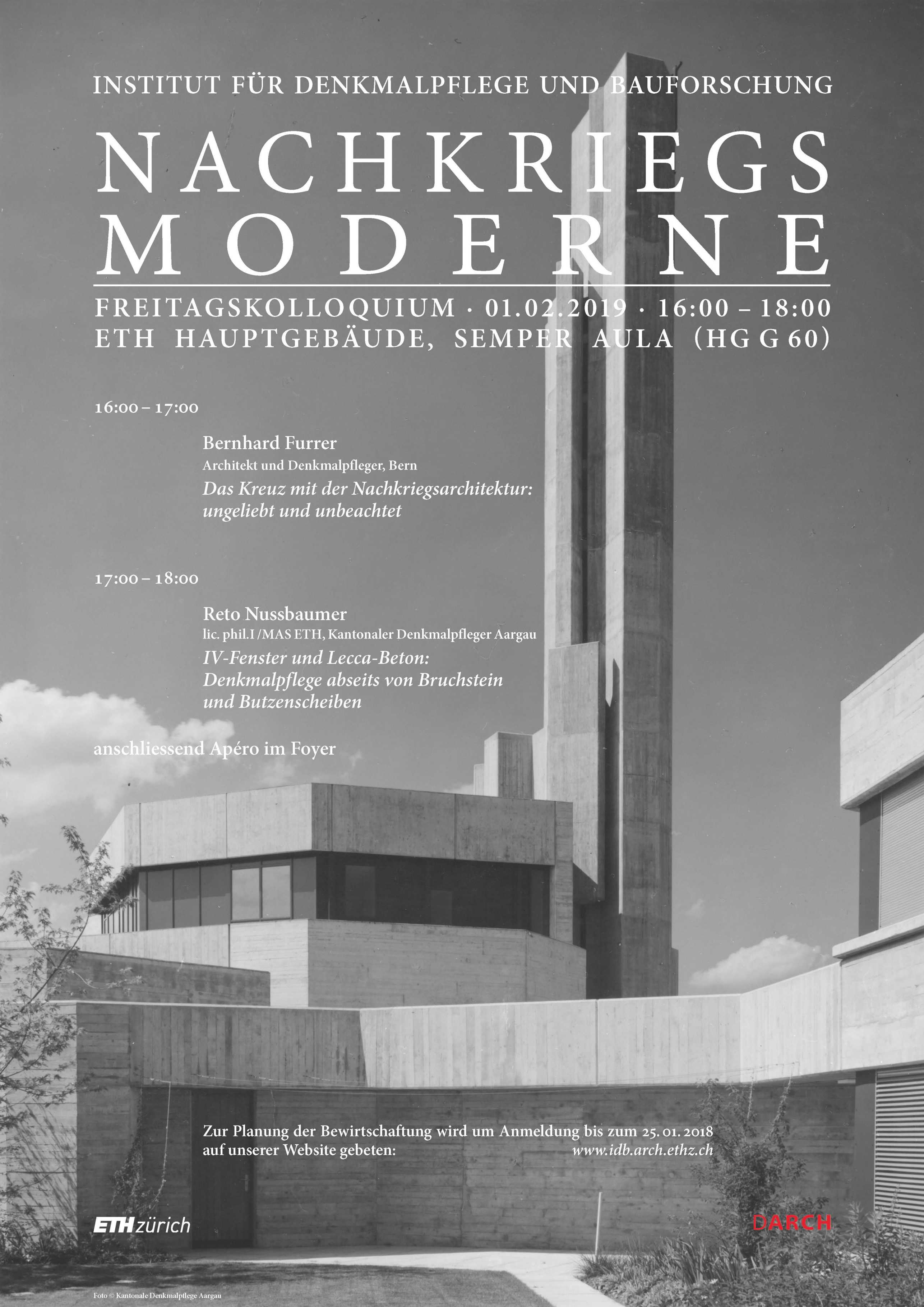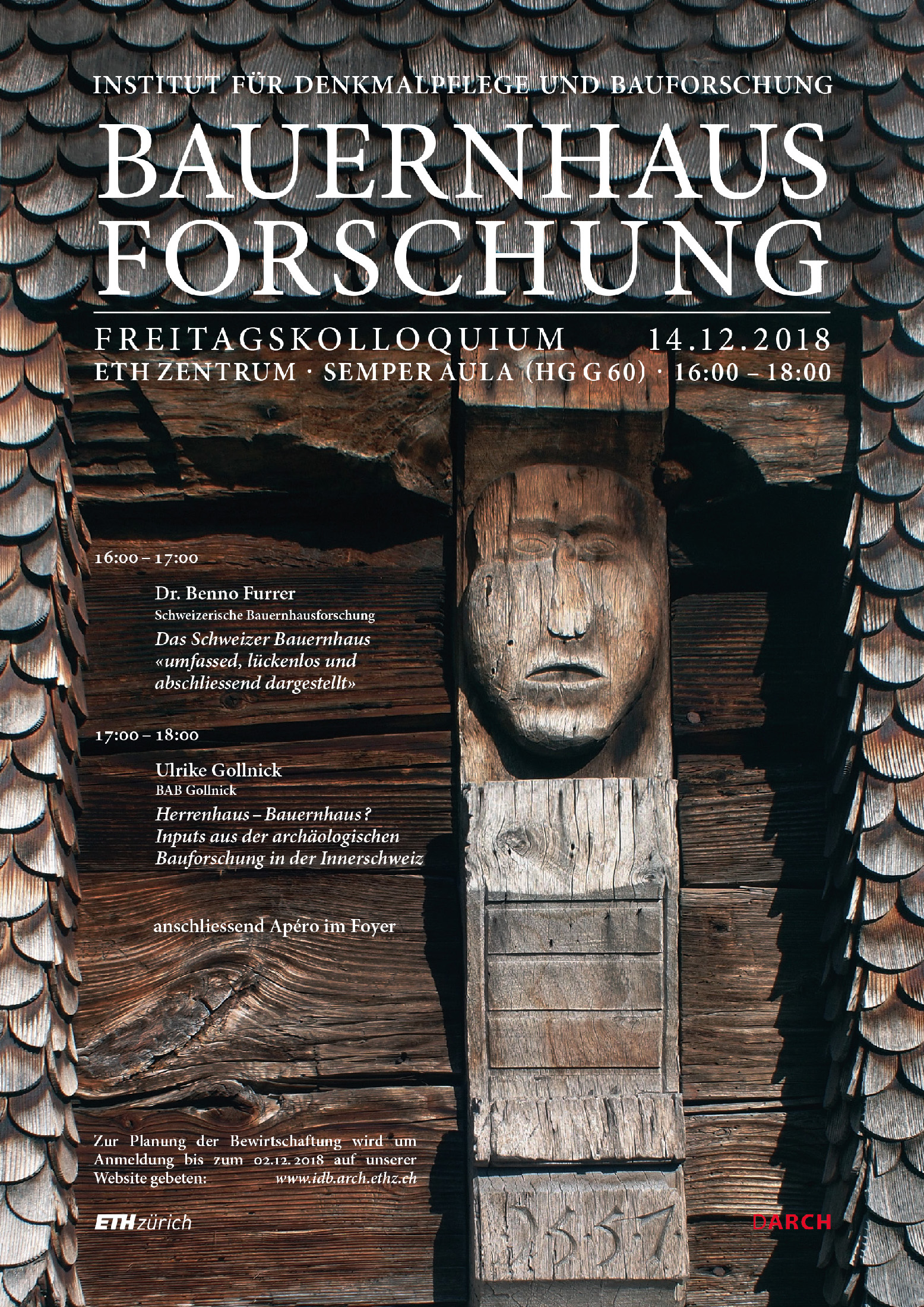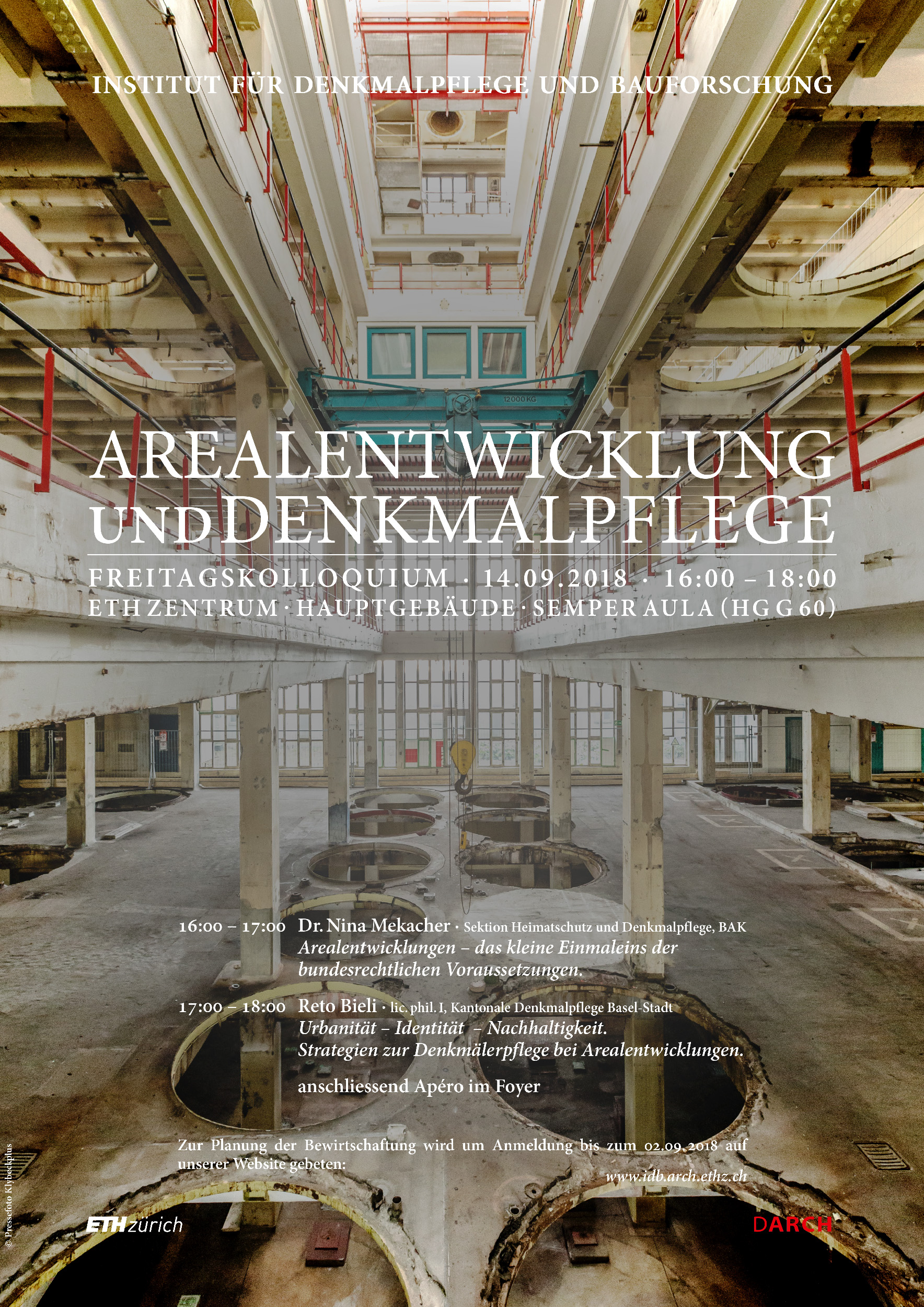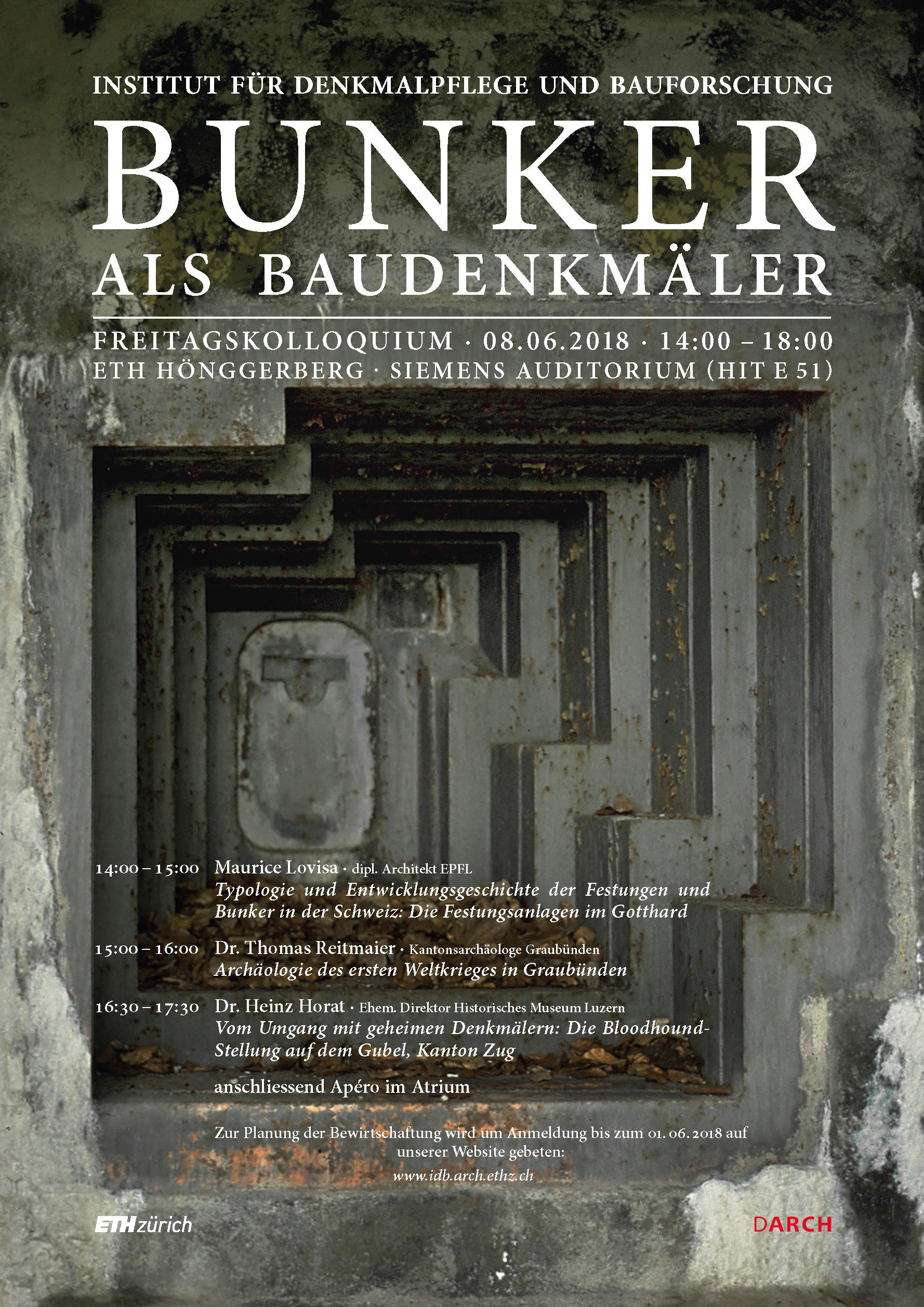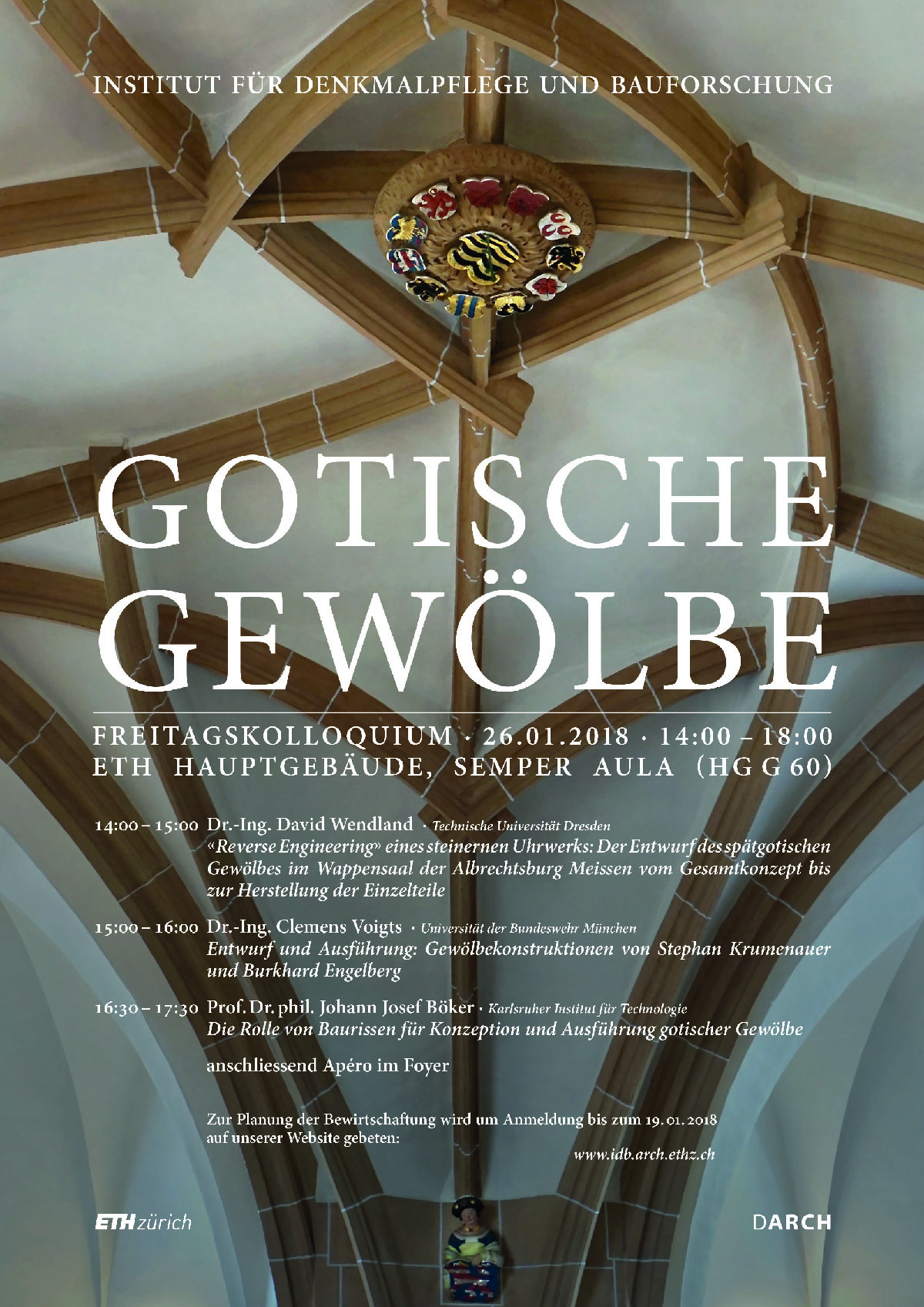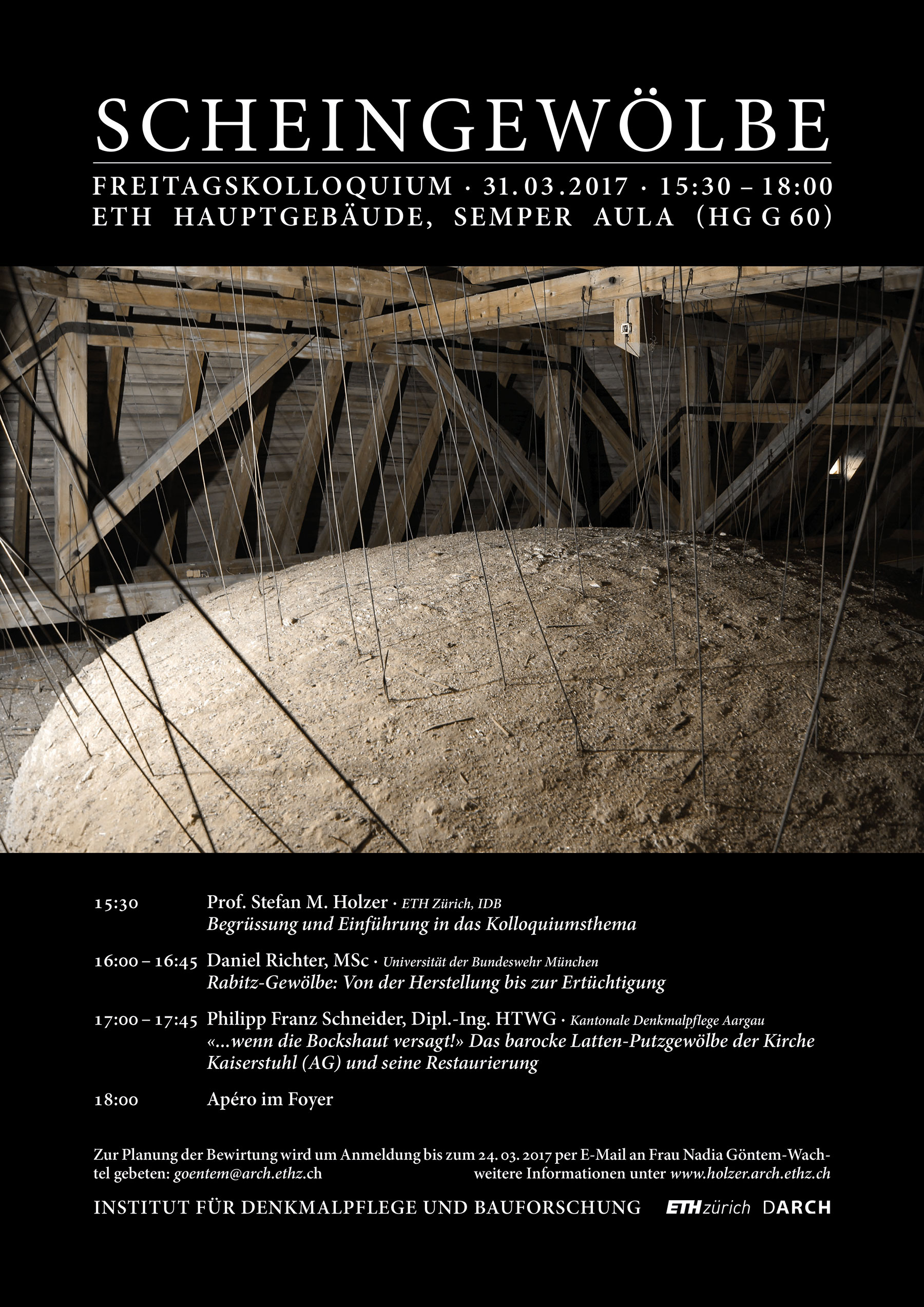Past Events
Reconstructing and Visualising:
Illustrativeness vs. Scientificness?
Thursday, 30. Juni 2022, Start 14.00 Uhr
hybrid as a local event (ETH HCI J 4) and online via Zoom
Programme
14.00–14:45 Stephan Wyss, Tobias Frey (Stadtarchäologie Zürich):
Historische 3D-Stadtmodelle zur Stadt Zürich und ihrer Vorgeschichte
14.45–15:30 Thekla Schulz-Brize, Shipan Zhao, Ann-Christin Stolz (TU Berlin):
Darstellungsmethoden der historischen Bauforschung im Kontext wissenschaftlicher Fragestellungen
15.30–16:00 Coffee Break
16.00–16:45 Dominik Lengyel (BTU Cottbus):
Gestaltung als Schlüssel zur Visualisierung wissenschaftlicher Hypothesen
16.45–17:30 Marc Grellert (Architectura Virtualis / TU Darmstadt):
Abschied von Eindeutigkeiten und neue Wege zur Wissenschaftlichkeit
17.30–18:15 Dietmar Kurapkat (0TH Regensburg):
Webbasierte wissenschaftliche Nachweisführung von Rekonstruktionsprozessen anhand des Fallbeispiels Basar von Aleppo
Falsework and vault construction
Schedule:
14:00–15:00 Prof. Dr.-Ing. Stefan M. Holzer (ETH Zürich)
Schalung und Lehrgerüst: Quellen und Rekonstruktionsmöglichkeiten
15:00–16:00 Dr. Ulrike Heckner und Dipl.-Ing. Hans Meyer (LVR-Amt für Denkmalpflege im Rheinland) Was macht das Holz im Gewölbe? Spuren von Bau- und Lehrgerüsten am Westbau von St. Pantaleon in Köln
16:00–17:00 Dr. Ir. Arch. Louis Vandenabeele (ETH Zürich)
The masonry domes of St Anthony, Padua
17:00–18:00 Prof. Dr.-Ing. David Wendland (BTU Cottbus-Senftenberg)
Überlegungen zu den Lehrgerüsten beim Bau gotischer Gewölbe
18:00–19:00 Prof. Dr.-Ing. Hermann Schlimme (TU Berlin)
Zwischen Entwurf und Denkmodell: Leonardo da Vincis Auseinandersetzung mit Lehrgerüsten
Fifth Annual Conference of the Gesellschaft für Bautechnikgeschichte 2021
Material-appropriate construction!?!
Material-appropriate constructions are considered a goal and a challenge in the building industry. Many historical constructions are "material-fair" - from ancient Roman opus caementicium vaults with graded use of light and heavy aggregates to the classical Polonceau roof made of wood, cast and wrought iron. But how does one know that a construction is appropriate for the material? Are empirical knowledge of the material as well as elementary skills in analysing a planned structure already sufficient?
Material zum Download
Download Tagungsprogramm (PDF, 1.3 MB)
What can Monument Preservation learn from Construction History?
Construction history, history of building technology, "Konstruktiongeschichte", ... these are terms for a branch of research that has experienced a great international upswing in recent years. The new subject combines interest and work directly on the object with the preservation of historical monuments and historical building research. But what is the new discipline all about? History of technology, history of science, building research under a new name? And what can monument preservation expect? New evaluation criteria for monuments, new public interest, new conservation strategies?
The Institute of Historic Building Research and Conservation is inviting visitors to the Friday Colloquium to reflect on these questions and initiate a dialogue between the history of construction and the preservation of monuments. We invite top representatives and experts from all over Europe. In each colloquium, two different points of view will be juxtaposed and concretized on the basis of current research work.
The lectures will be held in good Swiss tradition in German, French, Italian or English, with the possibility of formulating contributions to the discussion in the respective mother tongue.
The Challenge of Wide Span
Conference on 27/28 June 2019 in the Siemens Auditorium at ETH Zurich
Anything beyond 60 feet (approx. 18 m) can be considered a very wide span for any historic timber structure. While some medieval roof trusses reached or even surpassed this limit, it was far more often challenged during Early Modern times. Driving forces were post-free spaces required for churches with increasing importance of sermons both in protestant and catholic contexts, general architectural developments, and simultaneous preference of ever lower roof pitches. Among other countries, Switzerland became very well-known for its mastery of wide-span timber structures in the 18th century, not only in roof trusses, but also in bridge building.
Our conference will bring together experts from all over Europe to discuss the medieval origins and the early modern development of “proto-engineering” timber structures bridging large spans in Switzerland and beyond, i.e. in a European perspective. Results from an on-going research project on wide-span Swiss timber roofs (funded by the Swiss National Science Foundation and presented in 5 lectures) will be confronted with the appropriate international context.
Conference Schedule
Standards versus Monuments
Friday Colloquium 24th May 2019
Place: ETH Hönggerberg, Siemens Auditorium (HIT E 51)
Time: 16:00 - 18:00
"Building standards must not be applied to monuments without a thorough investigation. On a case-by-case basis, it must be considered whether compliance with a standard must be dispensed completely or partially, or whether the objective of the standard can be achieved by other suitable measures", as written in the Guidelines for the Preservation of Monuments in Switzerland (2007). But what does reality look like? To what extent are standards mandatory to be applied and which approaches to solutions have been successfully implemented in practice for historical monuments?
The next Friday Colloquium of the Institute of Historic Building Research and Conservation will examine the dispute over current standards for the restoration of historical monuments on the one hand, and the preservation of their non-compliant testimonial values on the other.
Schedule
16:00 - 17:00
Eugen Brühwiler (EPFL, Groupe ingénierie des structures):
Normen und Normenauslegung in der Denkmalpflege
17:00 - 18:00
Gerold Kunz (Kantonaler Denkmalpfleger Nidwalden):
Erfahrungen und Prognose – das Baudenkmal im Normentest
Followed by an aperitif in the foyer of the Siemens Auditorium.
Post-War Modernism
Friday Colloquium 1st February 2019
Ort: ETH Zentrum, Semper Aula (HG G 60)
Zeit: 16:00 - 18:00
In 2018, the Triemli Tower in Zurich, a 60s building in the style of brutalism, was voted the "ugliest house in Switzerland". Such a building made of pure exposed concrete with its deliberately sober architecture is perceived by parts of the general public as unadorned and cold and the question of the architectural qualities of such 20th century buildings is not only raised by the population. What is the monumental value of the objects of post-war modernism, which represent an aesthetic of functionality, material consciousness and rationality, and what of them is worth preserving in what form?
The first Friday Colloquium 2019 of the Institute Historic Building Research and Conservation will examine the questions concerning the criteria for the worthiness of protection and the conservation of post-war modernist buildings.
Schedule
16:00 - 17:00
Bernhard Furrer (Architekt und Denkmalpfleger, Bern):
Das Kreuz mit der Nachkriegsarchitektur: ungeliebt und unbeachtet.
17:00 - 18:00
Reto Nussbaumer (Kantonaler Denkmalpfleger Aargau):
IV-Fenster und Lecca-Beton: Denkmalpflege abseits von Bruchstein und Butzenscheiben.
After the Friday colloquium, there will be an aperitif in the foyer of the Semper Aula from about 6:00 pm.
Farmhouse Research
Friday Colloquium 14th December 2018
Place: ETH Zentrum, Semper Aula (HG G 60)
Time: 16:00 - 18:00
Rural buildings characterise large parts of the local cultural landscape. The "Schweizerische Bauernhausforschung" and its predecessor have been researching the preserved stock of rural residential and farm buildings for over 70 years and are publishing the results in the series "Die Bauernhäuser der Schweiz". The project will be completed next year with the publication of the last volumes. In addition to this primarily folkloristic approach, archaeological building research has been firmly established as a historical science in Switzerland for decades and has also been devoted to rural buildings for some time. The fourth Friday Colloquium 2018 of the Institute of Historic Building Research and Conservation at ETH Zurich offers the opportunity to gain an insight into the history and future of farmhouse research in Switzerland and to see where and how it overlaps with archaeological building research, complements it or where the two disciplines may even seem to contradict each other.
Schedule
16:00 - 17:00
Dr. Benno Furrer (Schweizer Bauernhausforschung):
Das Schweizer Bauernhaus - "umfassend, lückenlos und abschliessend dargestellt".
17:00 - 18:00
Ulrike Gollnick (BAB Gollnick):
Herrenhaus – Bauernhaus? Inputs aus der archäologischen Bauforschung in der Innerschweiz.
After the Friday colloquium, there will be an aperitif in the foyer of the Semper Aula from about 6:00 pm.
Site Development and Preservation
Friday Colloquium 14th September 2018
Place: ETH Zentrum, Semper Aula (HG G 60)
Time: 16:00 - 18:00
As early as the 1960s, there was a marked increase in the use of the word "area" in the context of construction projects, which currently seems to be repeating itself. The trend towards the development of areas is currently closely following the urban development requirement of recompaction, whereby the added value in terms of economic efficiency and sustainability is always emphasised. But what opportunities and challenges arise from the point of view of monument preservation? In the third Friday Colloquium 2018 of the Institute of Historic Building Research and Conservation at ETH Zürich, we will therefore examine the potential and strategies of monument preservation for site development projects within Switzerland.
Schedule
16:00 - 17:00
Dr. Nina Mekacher (Sektion Heimatschutz und Denkmalpflege, BAK):
Arealentwicklung - das kleine Einmaleins der bundesrechtlichen Voraussetzungen.
17:00 - 18:00
Reto Bieli (Kantonale Denkmalpflege Basel-Stadt):
Urbanität - Identität - Nachhaltigkeit. Strategien zur Denkmälerpflege bei Arealentwicklungen.
After the Friday colloquium, there will be an aperitif in the foyer of the Semper Aula from about 5:30 pm.
Bunkers as Historic Monuments
Friday Colloquium 8th June 2018
Place: ETH Hönggerberg, Siemens Auditorium (HIT E 51)
Time: 14:00 - 18:00
The construction of military fortifications has a long tradition in Switzerland, dating back to the Middle Ages. Several of these complexes, especially from the 20th century, are now listed and some of them have been opened to the public. But more and more objects are being added that are no longer needed to fulfill the main mission of the army and administration. "What to do with all the bunkers" was therefore the title of the Tagesanzeiger in 2013 and the same question can be asked today with the same relevance. In the second Friday Colloquium 2018 of the Institute of Historic Building Research and Conservation at ETH Zurich, we will therefore examine the question of how such monuments must be dealt with and how such bunkers and fortifications can be converted and used today.
Schedule
14:00 - 15:00
Maurice Lovisa (dipl. Architekt EPFL):
Typologie und Entwicklungsgeschichte der Festungen und Bunker in der Schweiz: Die Festungsanlage im Gotthard.
15:00 - 16:00
Dr. Thomas Reitmaier (Kantonsarchäologe Graubünden):
Archäologie des ersten Weltkrieges in Graubünden.
- coffee break -
16:30 - 17:30
Dr. Heinz Horat (Ehem. Direktor Historisches Museum Luzern):
Vom Umgang mit geheimen Denkmälern: Die Bloodhound-Stellung auf dem Gubel, Kanton Zug.
After the Friday colloquium, there will be an aperitif in the foyer of the Siemens Auditorium from about 5:30 pm.
Focus on Architecture
On May 3rd 2018 an event on the preservation of historical buildings will take place at the Landesmuseum: What are the approaches and challenges and what do terms such as authenticity, inspiration or reference mean in architecture and monument preservation today?
Schedule
03.05.2018 16:00 - 18:00 | Further information
15:30 Admission Auditorium Willy G.S. Hirzel
16:00 Welcome by Andreas Spillmann and introduction of the guests by Karin Salm
Part 1: Input lectures
- Rita Schiess, Dipl. Arch. ETH BSA SIA, Architect's Office Pfister Schiess Tropeano
- Prof. Dr.-Ing. Stefan M. Holzer, ETH Zurich, Building Archaeology and Construction History
Break
- Giovanni Netzer, theologian, art historian and theatre scientist, founder and director of Origen Festival Cultural in Riom (GR)
- Christoph Schläppi, architectural historian
Break
Part 2: Panel discussion
Moderation: Karin Salm, cultural journalist
The participants of the Focus Day will then have the opportunity to visit the exhibition external page "Auf der Suche nach dem Stil. 1850 - 1900" free of charge. The museum closes at 19:00.
In cooperation with:
ETH Zürich / Institute for Historic Building Research and Conservation
Federal Department of Home Affairs FDHA Federal Office of Culture FOC / Protection of Homeland and Monuments
Gothic Vaults.
Friday Colloquium 26th January 2018
Place: ETH Main building, Semper Aula (HG G 60)
Time: 14:00 - 18:00
The art of vaulting reached its climax throughout Europe with the figured vaults of the late Gothic period. The rich ribbed vaults offered the stonemasons an opportunity to demonstrate their geometric knowledge and craftsmanship, but in addition to the aesthetic effect, the fine-meshed ribbed nets facilitated the vaulting of the webs without formwork. The design and construction of the vaults required efficient production organization and precise coordination of the individual manufacturing processes. In the first Friday Colloquium in 2018 of the Institute of Historic Building Research and Conservation (IDB) at the ETH Zürich, various experts will report exemplarily on detailed examinations of the late Gothic vaulting practice and offer us in-depth insights into these exciting constructions and contribute to a deeper understanding of the long-forgotten knowledge traditions in the transition from the Middle Ages to the Renaissance.
Schedule
14:00 - 15:00
Dr.-Ing. David Wendland (Technische Universität Dresden):
«Reverse Engineering» eines steinernen Uhrwerks: Der Entwurf des spätgotischen Gewölbes im Wappensaal der Albrechtsburg Meissen vom Gesamtkonzept bis zur Herstellung der Einzelteile.
15:00 - 16:00
Dr.-Ing. Clemens Voigts (Universität der Bundeswehr München):
Entwurf und Ausführung: Gewölbekonstruktion von Stephan Krumenauer und Burkhard Engelberg.
- coffee break -
16:30 - 17:30
Prof. Dr. Johann Josef Böker (Karlsruher Institut für Technologie):
Die Rolle von Baurissen für Konzeption und Ausführung gotischer Gewölbe.
After the Friday colloquium, there will be an aperitif in the foyer of the Semper Aula from about 5:30 pm.
Inaugural Lecture
On Monday, May 8, 2017 from 5.15 p.m. Prof. Dr.-Ing. Stefan M. Holzer will give his inaugural lecture at the Audi Max (HG F 30) on "Lithotomy, Slapping, Fin Wedges: A conversation with monuments - or: "What is and why do we need building research and construction history?
All those interested are cordially invited to the introductory lecture and the subsequent aperitif.
Links
False Vaults.
Friday colloquium 31th March 2017
In coorporation with external page ICOMOS Suisse and the external page KSD (Konferenz Schweizer Denkmalpflegerinnen und Denkmalpfleger).
Ort: ETH Main Building, Semper Aula (HG G 60)
Zeit: 15:30 - 18:00
A vaulted ceiling lends a building a higher architectural dignity. However, the static and financial circumstances have not always allowed a real vault to be built from natural or artificial stone. In such cases, since the late Middle Ages, but especially from the Baroque period to the early 20th century, people have been fond of taking shelter from false vaults, which resemble a real vault, but consist only of a thin plaster pan which is attached to a framework and suspended from the roof structure. The first Friday Colloquium 2017 of the Institute of Historic Building Research and Conservation at the ETH Zürich turns to the very practical problems that arise in assessing the condition, preservation and possible upgrading of such apparent vaults.
Schedule
- 15:30 - 16:00 – Prof. Dr.-Ing. Stefan M. Holzer (ETH Zürich, IDB): Address of welcome and introduction into the subject.
- 16:00 - 16:45 – Daniel Richter, MSc (Universität der Bundeswehr München): Rabitz vaults: From erection to rehabilitation.
- 17:00 - 17:45 – Philipp Franz Schneider, Dipl.-Ing. HTWG (Kantonale Denkmalpflege Aargau): «...wenn die Bockshaut versagt!» The baroque plaster-and-lath vaults of the church of Kaiserstuhl (AG) and its restoration.
Following to the Freitagskolloquium, there will be an Apéro in the Foyer of the Semper Aula starting around 18:00.

Concrete before reinforced concrete. Freitagskolloquium 25 November 2016
In cooperation with external page ICOMOS Suisse and the the external page KSD (Konferenz Schweizer Denkmalpflegerinnen und Denkmalpfleger)
Place: ETH Hönggerberg, HIT E 51
Time: 14:00-18:00
Five papers, read in German and English, give a multifaceted insight in the history of concrete before the reinforced concrete.
- Session 1: Origins of modern concrete (archival sources and contemporaneous publications) – Gilbert Richaud (Université de Lyon) und Salvatore Aprea (EPFL)
- Session 2: From canal locks to bridges of unreinforced concrete (from the publications to a research on preserved monuments) – Stefan M. Holzer
- coffee break -
Session 3: Towards the reinforcement (issues of materials and conservation) – Bernard Espion (ULB Bruxelles) und Jürg Conzett


